

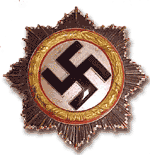
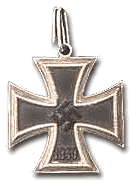
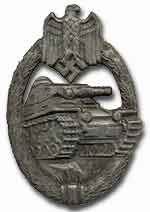
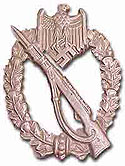

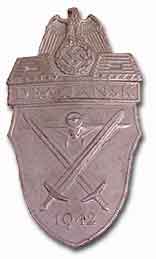
SS-Untersturmführer Hans Reiter
Stabskomanie/SS-Pz.Gren.Rgt.21
10.SS-Pz.Div. "Frundsberg"
II.SS-Pz.Armeekorps
Träger
des Ritterkreuz des Eiserne Kreuze (no.3475)








In the battle for Caen, British troops launched a large-scale attack on 14 July 1944 against the sector of the 10.SS-Pz.Division. The main objective of the attack was Hill 112. A thick smoke screen and a heavy artillery barrage preceded the attack. While lacking a divisional reserve, the 10.SS-Pz.Div. successfully defended and repelled every attack with the support of artillery that, in a rare exception, had large stores of ammunition at its disposal. In addition, the s.SS-Pz.Abt.102 assisted in reclaiming Hill 112.
Other smaller Allied penetrations
were also repelled after immediate German counterattacks. Despite the high number
of casualties sustained by the 10.SS-Pz.Div. on 15 July, from uninterrupted
artillery and tank fire, the division remained in control of Hill 112. At this
point, the divisional intervention reserve consisted of: I.(gep.)/Pz.Gren.Rgt.21
at St. Honorine, SS-Pz.Aufkl.Abt.10 at Hamars (5 km northwest of Thury-Harcourt)
, II./Inf.Rgt.980 on the right of the 10.SS-Pz.Division.
In the morning on 16 July, after heavy preparatory artillery fire, the Allies
launched an attack, under the artful use and cover of smoke and supported by
flamethrowers, which succeeded in breaching the German line. SS-Untersturmführer
Hans Reiter, commander of the Stabskompanie, SS-Pz.Gren.Rgt.21, distinguished
himself during the previous night and early morning defensive fighting on Hill
112. In fact, the divisional commander (Harmel) requested his mention in the
Wehrmachtsbericht (Army report). Holding his own position while the lines of
the neighboring company were breeched, Reiter gathered up nearby infantrymen
(stragglers) and formed a circular position. By way of his own initiative during
the afternoon hours on 16 July, Reiter blew open the encirclement and reestablished
contact with friendly forces. During the fighting with his company, Reiter destroyed
1 Churchill and 2 Sherman tanks, 2 armored artillery prime movers, 7 ammunition
trailers, 2 trucks, and 2 AT guns. Moreover, forward moving Allied infantry
of approximately 3 companies, supported by flanking fire, were cleverly engaged
with combined fragmentation shell and machine gun fire that demolished the majority
of the Allied force and caused the remainder to flee. Reiter's courage, skill,
and personal leadership negated the planned regimental counterattack for the
relief of Company "Reiter". Instead, the already prepared forces reestablished
the main line of battle (HKL) in the eastern sector of Btl.Bastian. Directly
and indirectly, Reiter helped both the regiment and the division retain Hill
112 for which he was awarded the Knight's Cross.
In the night on 16 July, the Allies shifted their main attack from Hill 112 to the area of Maltot. The attack against the village commenced in the dark at 0200 hours under field illumination and supported by flamethrower tanks (Crocodile MKIV). Close combat ensued. Btl.Schulz of the Pz.Gren.Rgt.22, temporarily encircled east of Maltot, was freed after a counterattack by the SS-Pz.Aufkl.Abt.10. Chateau de Fontaine, occupied by the division several days earlier during a shift in the main line of battle, was permanently lost
SS-Untersturmführer Hans Reiter was awarded the Knight's Cross of the Iron Cross on 23 August 1944 (nr. 3475). Reiter was born on 20 April 1920 in Feldkirchen and entered service on 1 September 1939. Before joining the Frundsberg Division, Reiter was a member of the 14./SS-Totenkopf Infanterie-Regiment 1, and awarded the Iron Cross II. Class on 1 July 1941, the Wound Badge in black on 11 October 1941, the Iron Cross I. Class on 1 November 1941, the Infantry Assault Clasp in bronze on 5 January 1942, the Infantry Assault Clasp in silver on 17 March 1942, the German Cross in Gold on 1 May 1942, the Wound Badge in gold on 23 June 1942, the Eastern Medal 1941-42 on 6 September 1942, and the Demjansk Shield on 19 June 1944.

Copyright Stenger Historica 2004